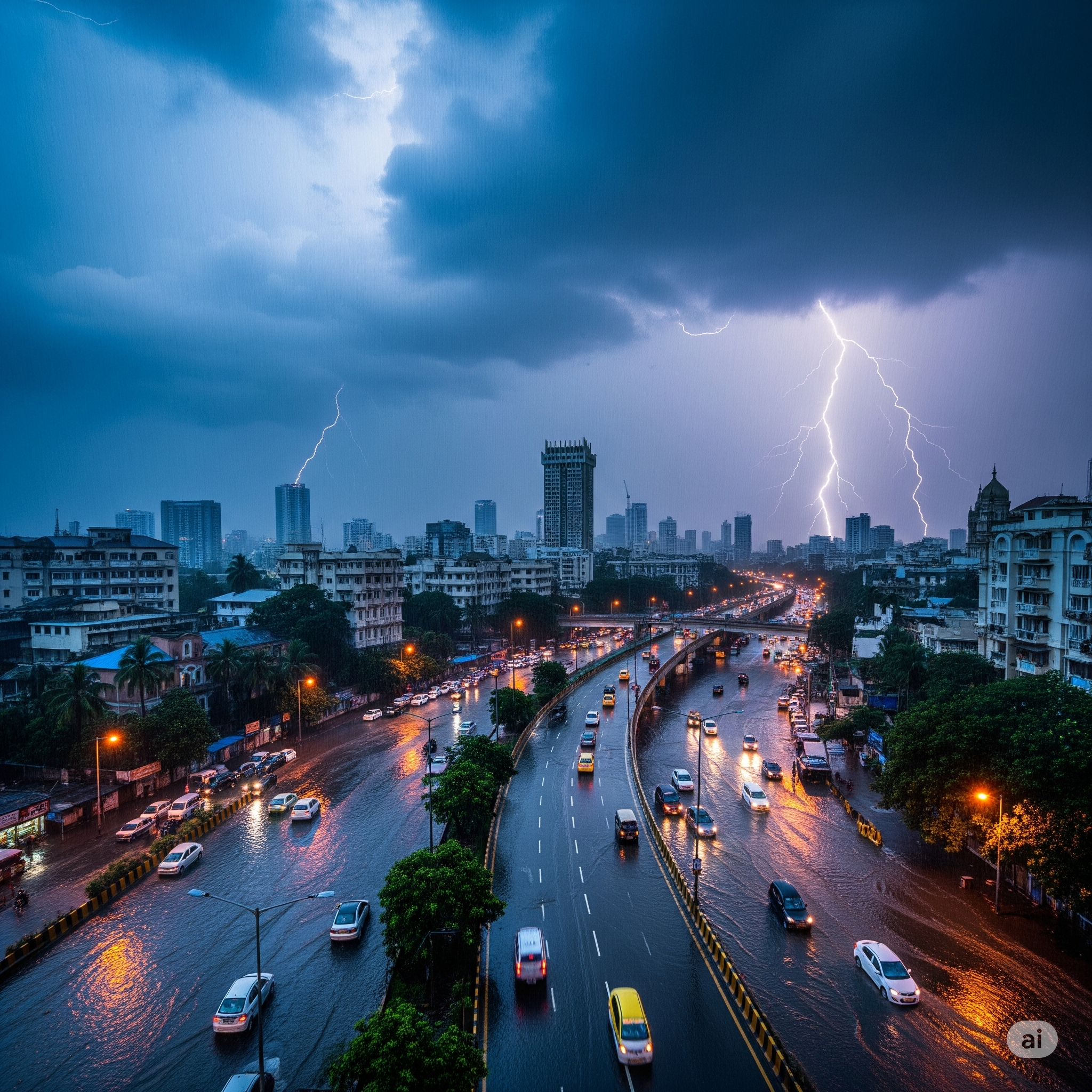Mumbai, the city that never sleeps, takes on a different rhythm when the monsoon arrives. While the rains bring much-needed relief from the scorching summer heat, they also usher in a period of severe rainfall alerts, often leading to disruptions in daily life. Understanding Mumbai weather, particularly during the monsoon, is crucial for residents and visitors alike. This comprehensive guide will equip you with essential knowledge and practical advice to navigate the heavy rainfall and stay safe when the city gets drenched.
Understanding Mumbai’s Monsoon: Why Heavy Rainfall Alerts are Common
Mumbai’s geographical location, nestled along the Arabian Sea, makes it highly susceptible to heavy monsoon rainfall. The southwest monsoon winds bring abundant moisture, leading to intense downpours. Coupled with the city’s unique topography, including low-lying areas and an older drainage system, even moderate rainfall can quickly lead to waterlogging and localized flooding.
The India Meteorological Department (IMD) plays a pivotal role in issuing weather alerts. These alerts, ranging from Yellow (be aware) to Orange (be prepared) and Red (take action), are crucial for public safety. When an IMD weather alert is issued for Mumbai, it signifies the potential for significant rainfall that could impact daily routines, transport, and safety.
Decoding Weather Alerts: What Do They Mean for You?
Knowing the different types of weather alerts issued by the IMD is your first step towards preparedness.
The IMD Alert System: Yellow, Orange, and Red
- Yellow Alert: Indicates the possibility of heavy rainfall at isolated places. While generally manageable, it’s a signal to be aware and plan for potential minor disruptions.
- Orange Alert: Warns of heavy to very heavy rainfall at a few places. This implies a higher likelihood of waterlogging, traffic snarls, and potential impact on public transport. Be prepared for significant delays and consider rescheduling non-essential travel.
- Red Alert: The most serious warning, signifying extremely heavy rainfall, often exceeding 20 cm in 24 hours. A Red Alert calls for immediate action, advising residents to avoid stepping out unless absolutely necessary due to the high risk of widespread flooding, significant disruptions to Mumbai local train news, and potential hazards like electrocution.
Impact of Mumbai Rains: From Roads to Rails
Heavy rainfall in Mumbai invariably impacts the city’s lifeline: its transportation network.
Mumbai Local Train News & Road Disruptions
The Mumbai local train network, the backbone of the city’s commute, is often the first to be affected. Waterlogging on tracks can lead to significant delays, diversions, or even cancellations of services on the Central, Western, and Harbour lines. Similarly, road traffic comes to a crawl, with severe waterlogging turning key junctions into temporary lakes. This can lead to extended travel times and gridlocks.
Air Travel and Other Services
Beyond local trains and roads, air travel to and from Chhatrapati Shivaji Maharaj International Airport (CSMIA) can also experience disruptions due to low visibility and waterlogged access roads. Essential services, though usually resilient, can face challenges, and it’s always wise to be prepared for temporary outages.
Staying Safe and Prepared: Essential Monsoon Tips for Mumbai
Being prepared is key to minimizing the impact of the monsoon.
Monsoon Preparedness at Home
- Secure your surroundings: Ensure all loose objects on balconies or terraces are secured to prevent them from being blown away or causing damage.
- Electrical Safety: Unplug electronic appliances during heavy downpours or thunderstorms to prevent damage from power surges or lightning strikes. Stay away from electric poles and fallen power lines.
- Emergency Kit: Keep an emergency kit ready with essentials like a flashlight, extra batteries, a first-aid kit, medicines, and some dry snacks.
Navigating Outdoors During Rain
- Check Weather Forecast Mumbai: Before stepping out, always check the weather forecast today from reliable sources like the IMD. Live weather updates can help you plan your commute.
- Travel Smart: If you must travel, use public transport, but be aware of potential delays. Avoid driving through waterlogged areas, as the depth can be deceptive.
- Footwear and Rain Gear: Invest in good quality waterproof footwear and carry a sturdy umbrella or raincoat.
Pune Weather Today and Beyond: Monsoon Across Maharashtra
While Mumbai often takes the spotlight, other parts of Maharashtra, including Pune, also experience significant monsoon activity. Pune weather today forecasts often indicate similar patterns of heavy rainfall, especially in the ghat sections. It’s important to stay updated on the weather report today for your specific region from the IMD.
Conclusion: Embracing the Rains Responsibly
The Mumbai monsoon is an integral part of the city’s identity. While it brings challenges, proactive preparedness and adherence to weather advisories can ensure your safety and minimize inconvenience. By staying informed about rain in Mumbai and weather Mumbai updates, and following safety guidelines, you can navigate the severe rainfall alerts with confidence.
What are your go-to monsoon survival tips in Mumbai? Share your experiences and advice in the comments below!
FAQ Section
Q1: Where can I find the most accurate Mumbai weather updates? A1: The India Meteorological Department (IMD) website and their official mobile app are the most authoritative sources for weather forecast Mumbai and live weather updates. Local news channels also provide frequent rain news Mumbai.
Q2: What should I do if my local train is delayed during heavy rains? A2: If your Mumbai local train is delayed, stay calm and listen to announcements. Check for Mumbai local train news updates on railway apps or official social media handles. Consider alternative routes if the delays are prolonged.
Q3: Is it safe to drive during a severe rainfall alert in Mumbai? A3: It is generally advisable to avoid driving during a heavy rainfall alert Mumbai, especially during a Red Alert. Roads can become severely waterlogged, leading to vehicle breakdowns and hazardous conditions.
Q4: How can I prepare my home for Mumbai rains? A4: Prepare your home by clearing drains, securing loose items, checking electrical wiring, and having an emergency kit ready. Consider waterproofing vulnerable areas if needed.



